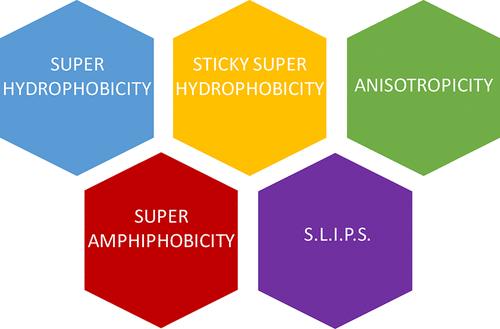Bioinspired and Biomimetic Wetting Properties
IF 16
1区 材料科学
Q1 CHEMISTRY, MULTIDISCIPLINARY
引用次数: 0
Abstract
We review the bioinspiration and biomimetism, for which wetting properties are involved. Nature is able to capture or repel liquids such as water, following the needs. The most famous example of water repellency is the Lotus leaves, but numerous other species are also able to capture water. On the contrary, springtails are able to repel low-surface-tension liquids, while pitcher plants are able to capture prey.

仿生润湿特性
本文综述了涉及润湿特性的生物诱导和仿生。大自然能够根据需要捕获或排斥诸如水之类的液体。最著名的防水例子是荷叶,但许多其他物种也能捕获水。相反,弹尾虫能够排斥低表面张力的液体,而猪笼草能够捕获猎物。
本文章由计算机程序翻译,如有差异,请以英文原文为准。
求助全文
约1分钟内获得全文
求助全文
来源期刊

ACS Nano
工程技术-材料科学:综合
CiteScore
26.00
自引率
4.10%
发文量
1627
审稿时长
1.7 months
期刊介绍:
ACS Nano, published monthly, serves as an international forum for comprehensive articles on nanoscience and nanotechnology research at the intersections of chemistry, biology, materials science, physics, and engineering. The journal fosters communication among scientists in these communities, facilitating collaboration, new research opportunities, and advancements through discoveries. ACS Nano covers synthesis, assembly, characterization, theory, and simulation of nanostructures, nanobiotechnology, nanofabrication, methods and tools for nanoscience and nanotechnology, and self- and directed-assembly. Alongside original research articles, it offers thorough reviews, perspectives on cutting-edge research, and discussions envisioning the future of nanoscience and nanotechnology.
 求助内容:
求助内容: 应助结果提醒方式:
应助结果提醒方式:


